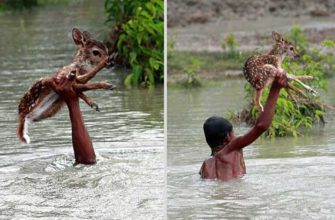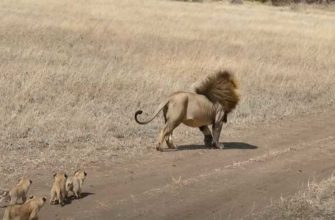According to a recent study, human activities in the forest, such as gathering forest products and hunting, frequently overlap with wildlife activities in the forest’s protected area and its buffer zone, raising the possibility of increased human-wildlife conflict in the Eastern Ghats’ tropical forests in the future. Researchers Vikram Aditya and T Ganesh of the Ashoka Trust for Research in Ecology and the Environment (ATREE) explained this trend in their study that was carried out in the Eastern Ghats, a neglected tropical forest landscape in India that is rich in biota and experiences significant levels of human infiltration.

According to a study published in the Biotropica journal in June, there was a significant level of overlap between human activities and those of wild animals, especially herbivore species (animals adapted to eating plant-based food).
According to Aditya, who spoke to The Indian Express, «The woods of the Eastern Ghats have a high degree of human activity, and we feel that this might have an impact on animal activity patterns in terms of the time of day when they are active. If so, this would have an impact on the local wildlife, especially endangered species and large-territory mammals. This could imply that organisms are adapting their temporal activity in response to people, leading to a shift in their ecological niche.

«In the study, we investigated if human activity might be a predictor of how mammals’ daily activities, or circadian activity patterns, are shaped. We discussed the findings from video trap investigations of animal circadian temporal activity patterns conducted in Andhra Pradesh’s Papikonda National Park and its buffer in the hilly northern Eastern Ghats.

In particular with herbivorous species, we saw significant overlap in the activity patterns of mammals and people. However, carnivores were also active during the day. Crepuscular activity is the period right before sunrise and right after nightfall when herbivorous mammals are most active. This study offers the first insights into the routine behaviors of mammals in a protected area and its buffer in India’s little-known Eastern Ghats, according to researchers. Despite having a relatively low average population density in the forests, «the northern regions of the Eastern Ghats experience rising human interference in wildlife habitat. Additionally prevalent in the area is hunting. The substantial overlap in activities poses a risk, according to Aditya.

The overlapping behavior in the northern Eastern Ghats was of particular interest to the researchers. The location was chosen due to its extensive forest cover, which is found outside of protected zones, where it is reasonable to assume a higher level of human activity. We selected to research mammal occupancy and temporal activity in the Papikonda National Park and its unprotected buffer outside of this terrain, Aditya said.

«We discovered that human activities had a lot in common with those of mammals, which was contrary to what we had anticipated. This does seem to suggest that at least some humans closely overlapped their activity in the forest with animals, particularly herbivores,» he said, pointing to the widespread hunting in the region that still plays a significant role in the traditions of the forest dwellers. «This does not prove that human activity was temporally correlated with wildlife or vice versa, but it does seem to suggest that at least some humans closely overlapped their activity with animals, particularly herbivores. In light of this, he stated, «the close overlap with herbivores is telling.»

The report concentrates on the northern Eastern Ghats, which the researchers claim have been mostly disregarded by ecologists, researchers, and conservationists.







